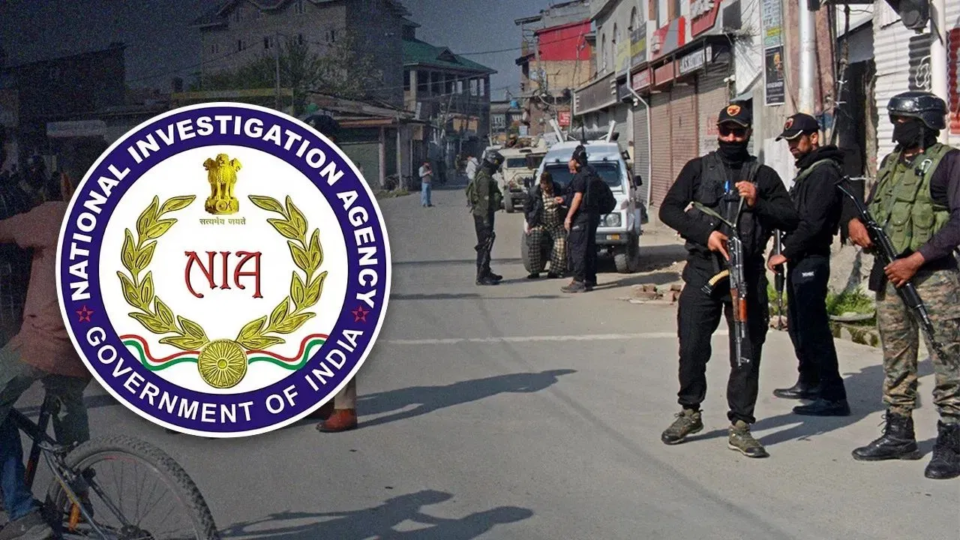
NIA’s Big Breakthrough: Arrests in Pahalgam Attack
Introduction

On April 22, 2025, terrorists struck at Baisaran Valley near Pahalgam, killing 26 tourists and injuring over 20. The National Investigation Agency (NIA) has now made its first major arrests—locals who provided critical support to the Pakistan‑based terrorists, marking a key development in the probe.
Recap of the Pahalgam Attack
A group of five militants armed with AK‑47s and M4 carbines entered the tourist zone and selectively executed victims based on their religious identity, marking the deadliest civilian massacre in Kashmir since 2000.
Investigators quickly linked the attackers to Pakistan, pointing to digital evidence—including satellite phone trails and safe‑house communications in Muzaffarabad and Karachi—highlighting direct involvement of Lashkar‑e‑Taiba (LeT) and possibly ISI and Pakistan Army operatives.
NIA Investigation Overview
- The NIA took charge on April 27, registering a fresh FIR and deploying forensic teams to the site .
- Over 2,800 people were questioned, with 150 detained, and 32 raids conducted across Jammu & Kashmir to dismantle the terror network.
- Probe findings link the wrongdoing to LeT handlers in Pakistan, backed by ISI and Pakistan Army directives.
Recent Major Arrests: Logging the Breakthrough
On June 22, the NIA arrested two local residents from Pahalgam:
| Name | Location | Role |
|---|---|---|
| Parvaiz Ahmad Jothar | Batkote | Provided shelter, food & logistics |
| Bashir Ahmad Jothar | Hill Park | Same support role |
Under Section 19 of the UAPA, they have revealed identities of the three Pakistani nationals tied to LeT who carried out the attack.
These operatives were hidden in a seasonal mountain hut (‘dhok’) in Hill Park and actively supported for the assault—making this the first major breakthrough in tracing the logistics network behind the attack.
Broader Implications & Diplomatic Backdrop
Financial Terror Financing
The Financial Action Task Force (FATF) condemned the attack on June 16, emphasizing that such atrocities “could not occur without money and the means to move funds.” A detailed FATF report on funding sources is anticipated soon .
Military Retaliation: Operation Sindoor
In response, India launched Operation Sindoor on May 7—precision strikes on terror infrastructure in Pakistan and PoK. Pakistan’s Deputy PM later confirmed Islamabad sought a ceasefire after these airbase strikes.
India defended its action at the UN on June 18, accusing Pakistan of harboring terrorists and engaging in a “theatre of deception”
Diplomatic Deadlock
At the SCO summit, India pushed for inclusion of the Pahalgam attack in the official statement—Pakistan resisted, citing the Jaffar Express incident.
Meanwhile, India’s pressure at the UN is intensifying efforts to blacklist The Resistance Front (TRF), a LeT-connected proxy, as a terror organization.
Local & Social Impact
In J&K, the probe has involved sweeping raids, house demolitions, and arrests—actions criticized by locals and leaders, including Mehbooba Mufti, as heavy-handed.
Punjab’s Sikh pilgrimages via the Kartarpur Corridor remain suspended since May 7, reflecting growing cross-border religious tensions.


Next Steps
- The NIA is seeking further evidence from locals, forcing accomplice networks to surface.
- Ongoing forensic digital analysis—telecom, satellite, and financial data—intensifies.
- Investigators aim to trace handlers in Pakistan and topple financial conduits supporting the attack.
Conclusion
The June 22 arrests mark a pivotal step in unraveling the Pahalgam attack network—providing insight into the Pakistani-national attackers and the logistical chain that enabled them. With mounting financial scrutiny from FATF, military pushback via Operation Sindoor, and global diplomatic attention, India’s multi-pronged response demonstrates its resolve. Continued vigilance, local cooperation, and international financial oversight remain essential to dismantle terror support systems.














Leave a Reply